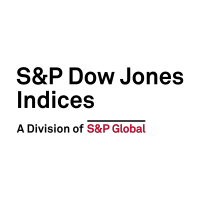Tag Archives: Realized volatility
The Gold Standard of Indices Meet’s Today’s Technology
Meet the S&P 500 FC Index, an innovative index designed to adjust allocations based on intraday volatility signals as it seeks to increase stability, limit exposure to drawdowns, while optimizing exposure to the S&P 500 via BofA’s Fast Convergence technology.
- Categories Multi-Asset
- Other Tags
A Dynamic Approach to Volatility Management
How can indices seek to maintain a pre-defined level of implied volatility? Look inside the S&P 500 Futures Defined Volatility Indices, a dynamic, rules-based approach to volatility management helping market participants align investments with risk appetites systematically.
- Categories Multi-Asset
- Other Tags
What’s New in the S&P Risk Parity Indices Methodology?
Launched in August 2018, the S&P Risk Parity Indices were designed to be a transparent, passive alternative to active risk parity funds. The index series comprises several indices that are differentiated by volatility targets in an 8%-15% range. This blog compares the original and new methodologies. After consultations with stakeholders, S&P Dow Jones Indices has…
- Categories Strategy
- Other Tags
- Categories
- Strategy
- Other Tags
VIX® Dropped Below S&P 500® Realized Volatility
While everyone has been concerned about the inverted yield curve, the CBOE Volatility Index® (VIX) has been under the 21-trading-day realized volatility of the S&P 500 since Aug. 16, 2019. Since volatility traders care not only about what is expected but also what actually transpired, the spread between implied volatility and realized volatility is one…
- Categories Strategy
- Other Tags
- Categories
- Strategy
- Other Tags
A new volatility regime? VIX® don’t think so!
Global equity markets experienced a challenging February. A U.S.-led selloff triggered a spike in volatility; the Cboe Volatility Index (VIX) recorded its largest ever daily increase on February 5 to reach its highest level since August 2015. But is higher volatility here to stay? Towards the end of last year, we published a paper –…
Can Realized Volatility Predict Future Volatility for Preferred Securities?
The investment community routinely uses historical realized volatility as an indicator of future volatility. One prominent example of this is the construction of ranking-based, low volatility equity strategies where realized volatility is used to form low volatility portfolios. Can the realized volatility of an asset indicate its future volatility? We extend the low volatility analysis…
- Categories Equities, Factors, Fixed Income
- Other Tags
- Categories
- Equities, Factors, Fixed Income
- Other Tags
2017: A Selection of Highlights
As we rapidly approach Christmas and New Year (not to mention year-end evaluations) it seems fitting to reflect on what happened in 2017. We will publish our regional month-end dashboards on December 29 (interested parties may sign up here). Before then, here are a few highlights using data as of December 15. Volatility was historically…
- Categories Strategy
- Other Tags
What is VIX Predicting about Future Volatility?
VIX® closed last night at 11.33. What, if anything, does that mean? We recently published a research paper, together with a more digestible practitioner’s guide, that provides a method for converting a given VIX level into an expectation for S&P 500® volatility over the next 30 days. Exhibit 1 shows that these estimates have provided…
- Categories Equities, S&P 500 & DJIA, Strategy
- Other Tags
- Categories
- Equities, S&P 500 & DJIA, Strategy
- Other Tags
2016 Presidential Election: Can Put Options Help Reduce Portfolio Volatility?
No other recent presidential elections have been as divided as this year’s. As the objectivity and credibility regarding poll numbers and media coverage of the candidates are being questioned, the U.S. economy and the capital market are facing an unusual level of political risk. Market participants may seek various tools to hedge the downside risk,…
- Categories Factors, S&P 500 & DJIA, Strategy
- Other Tags
- Categories
- Factors, S&P 500 & DJIA, Strategy
- Other Tags












































